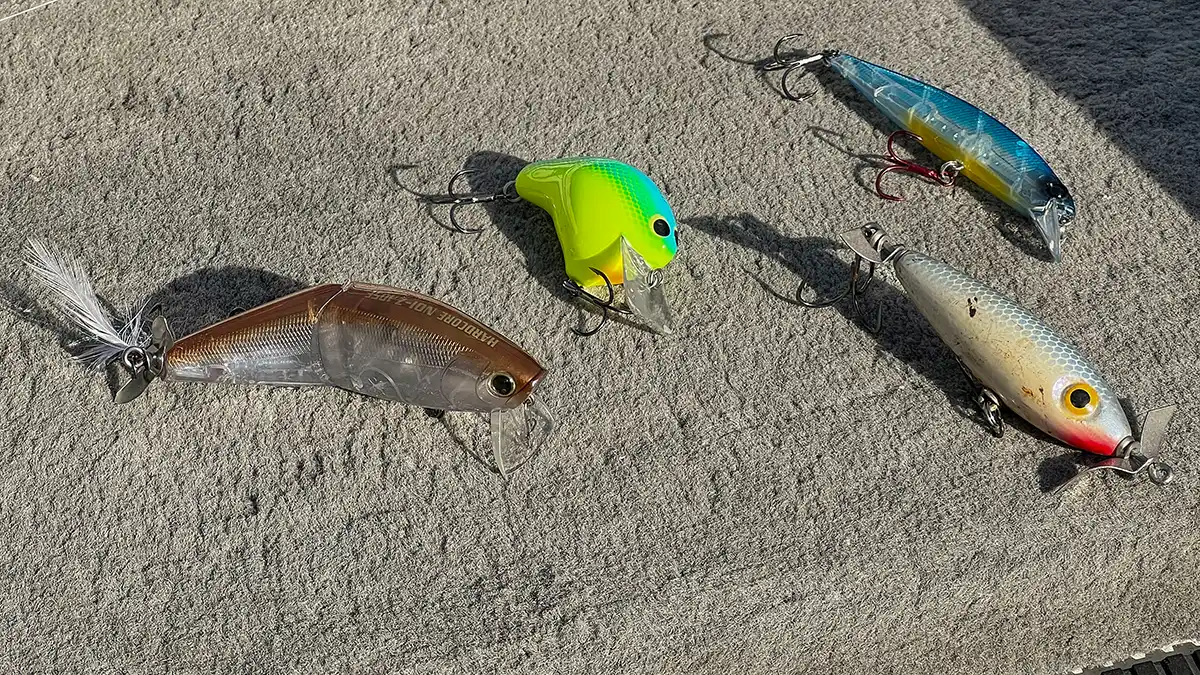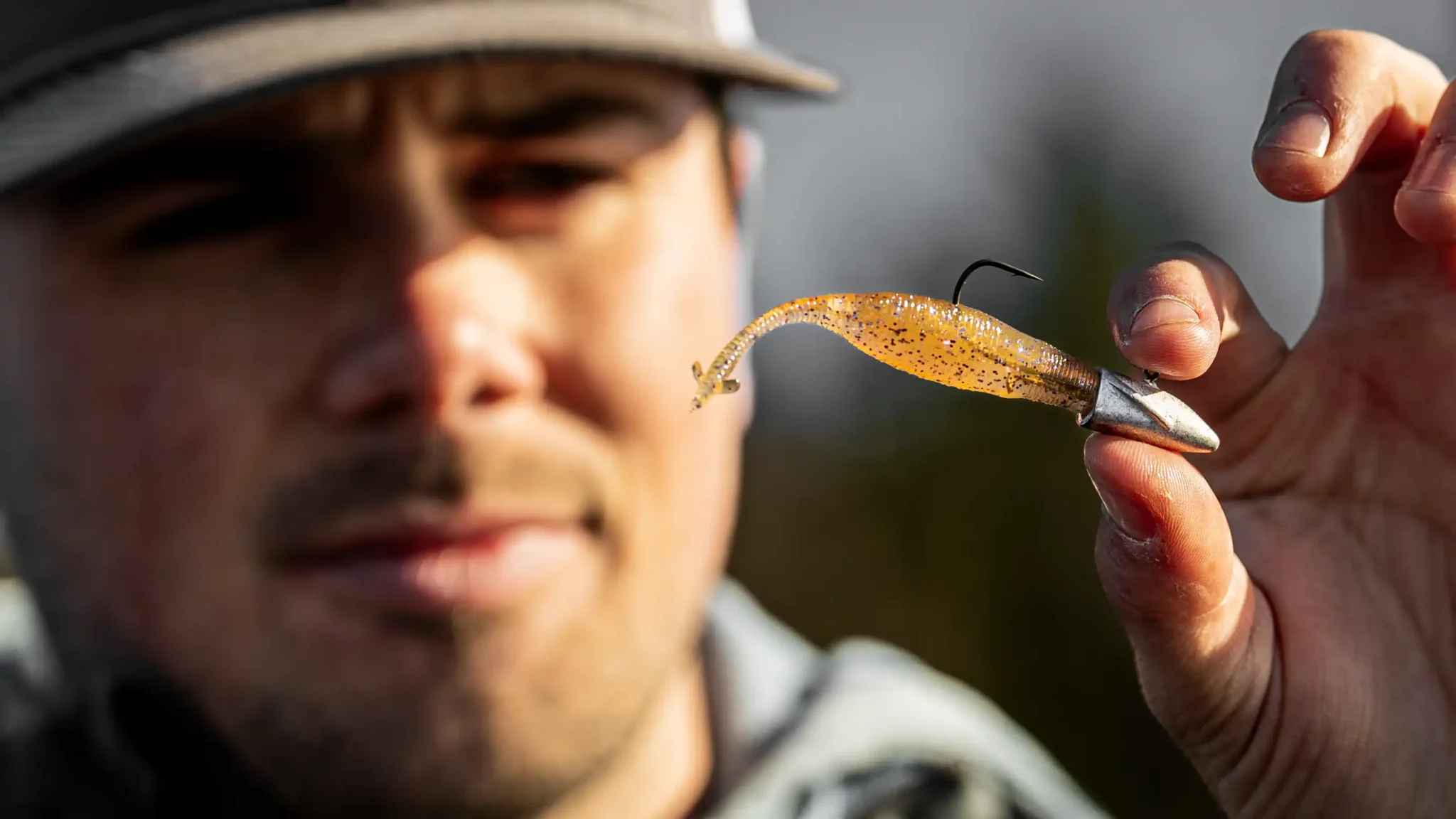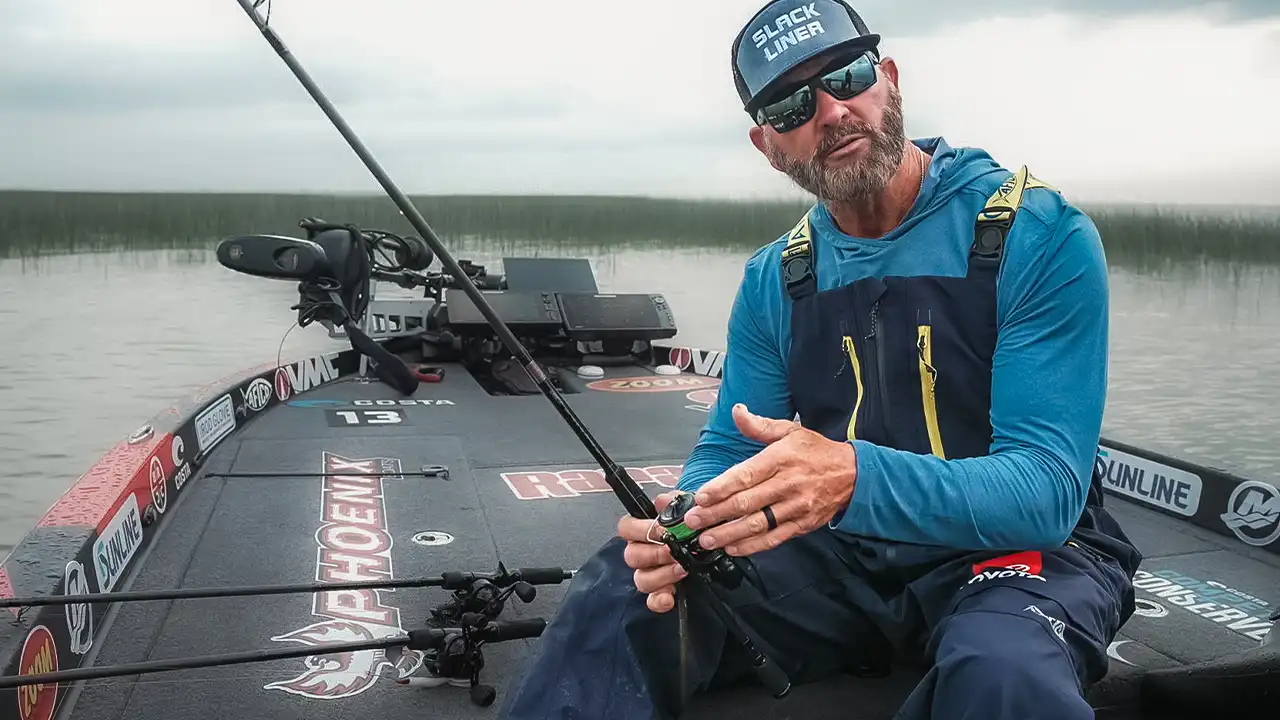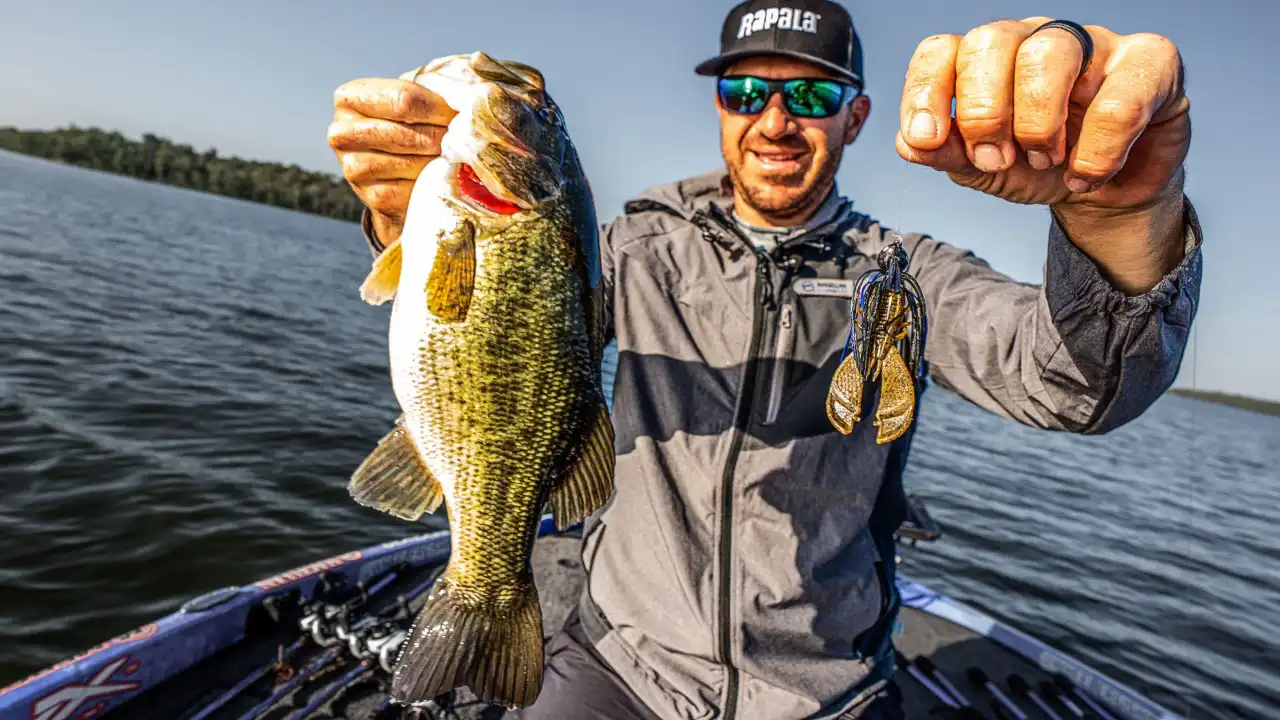Monofilament line gets a bad rap from self-proclaimed ‘more advanced’ bass anglers sometimes. I know I’ve been guilty of turning my nose up to mono over the years, looking at it as a lesser line meant for amateurs, one that has been outpaced by the advancements in braided fishing line and fluorocarbon lines. But arrogantly discrediting mono completely in the past has really only hindered me as an angler. There are simply certain applications in bass fishing for which this affordable, forgiving, buoyant line is truly better suited. So today, we’re going to unpack some of those and look at 10 ways mono can improve your fishing.
Monofilament can improve your angling in the following ways:
- Beginner Forgiveness
- Backing
- Carolina rig leader
- Close-quarter topwater
- Wake baits
- Twin-prop leader
- Shallowing up crankbaits
- Flipping wood/vines
- Helping a jerkbait suspend/float
- Slowing reaction time

BEGINNER FORGIVENESS
One benefit to monofilament that we mentioned at the onset is that this line is the best choice for beginners. Fishing is all about maximizing your odds of catching a fish. Mono is softer, cheaper and more forgiving than braid and fluoro, thus better for beginners. Nevermind the naysayers who think they know better. We’ve caught plenty of big bass on monofilament. And when we were learning to fish with baitcasters, mono was a lot cheaper to replace if we dogged up a spool.
Having the self-awareness and humility as an angler to take advantage of the benefits of mono, instead of jumping straight to braid or fluoro, will keep you from blowing lots of money and spending half your time on the water picking out backlashes. There will be a time to incorporate the other line types in the future, but embracing mono early on will keep your head and heart in the game and prevent burnout before you can even really get into bass fishing.
BACKING
When you do start to use more braided and fluorocarbon lines, you’ll see pretty quickly that it costs a lot to spool up just a few reels. And what’s worse, if you spool the whole reel with braid or fluoro, much of this expensive line will never see the light of day. You simply can’t cast all the line off of a modern baitcasting reel.
Using cheaper monofilament as backing on a baitcasting reel is a great way to cut down on the cost of spooling up. Fifteen- to 20- pound test mono is a good size range to use for backing. Tie the mono to the spool of the reel, fill it about one-third to halfway and then tie a line-to-line connector knot to your braid or fluoro and finish spooling the reel up.
CAROLINA RIG LEADER
Monofilament floats, where fluorocarbon sinks. This is one of the key differences between these two line types and something that you can use to make your Carolina rig more effective. A Carolina rig consists of a mainline that holds a weight and bead retained by a swivel, along with a leader line that has one end tied to the swivel and the other tied to a hook rigged with a weightless soft plastic bait.
The idea is for the bait to wash around in the little cloud of mud and silt generated by the weight, as the whole rig is drug along the bottom. With a fluorocarbon leader and a traditional soft plastic, the bait drags right along the bottom. But using a monofilament leader, the bait is allowed to float up a little. Using a super buoyant soft plastic or material like those found in the Z-Man ElaZtech lineup is a great way to even further pull the bait up off the bottom.

CLOSE-QUARTER TOPWATER
As we just stated, monofilament line floats. And so does braid. This makes these two line types better suited for topwater fishing than the sinking fluorocarbon. But which line is best for topwaters? Well, braid’s lack of stretch and long-range castability makes it the premiere choice for most topwater applications, allowing you to throw baits farther and set the hook better on the ends of those long casts.
However, there are a select few topwater situations when using monofilament actually increases your odds. Let’s use fishing a finesse popper for an example. A lot of times you’re pitching it around to targets. In this situation, you usually don’t need to cast the bait far, so braid is unnecessary in that regard. And the lack of stretch in braid is actually a bad thing when it comes to setting the hook and fighting a fish on a short line with a popper, as the braid can rip the hooks free. The stretch in mono is more forgiving and helps keep the fish from pulling off during the close-quarters fight.

WAKE BAITS
For similar reasons, wake baits typically perform better on mono than braid. Again, both of these lines float. But the braid is more noticeable in the clear water that you’d usually find yourself fishing a wake bait in. And wake baits almost always use treble hooks— the smaller baits naturally paired with smaller trebles.
Thus mono is better suited for use with most of these baits on the surface, or just below. However, you will want to move to braid when fishing large wake baits, like wooden rats for example. But 12- to 20-pound mono is perfect for the smaller and lighter wake baits with thin-wire trebles.

TWIN PROP LEADER
Another topwater presentation that can benefit from mono is a twin-prop bait, like a Devil’s Horse. This style of topwater is really popular in Florida and in a few other parts of the country during and right after the bass spawn. The fish in these situations are often on high alert, so long casts are essential, and thus braid is vital. Braid can also cut through the vegetation these baits are often fished around, far better than mono can.
But there’s one particular drawback to braid with this type of bait— it tangles in the front prop. These baits are designed to be twitched along the surface. The props spin as the bait coasts forward after each twitch, the front prop often tangling in the limp braid as it spins. You can use a short, 6-inch mono leader though to prevent this. The stiffer (but still buoyant) mono stays out in front of the prop (while also still keeping the nose of the bait up).
SHALLOW YOUR CRANKBAITS
Again, because monofilament floats, it can be used to add buoyancy to certain presentations. This we’ve already seen with Carolina rigs. The same property of mono can be used to decrease the depth range of a crankbait as well. Often times when talking cranking, we stress the importance of fluorocarbon line. Because it sinks and has a smaller diameter, it allows for crankbaits to be fished deeper.
But if you want to fish a shallow-diving squarebill in particularly skinny water for instance, higher-pound test mono can help. Sure, you could just hold your rod tip high or slow your retrieve to fish the bait closer to the water’s surface; but slowing your retrieve would change the action of the bait and holding your rod tip high would increase your odds of hanging in cover.
Using a 20-pound mono in place of a 12-pound fluoro instead could cut a foot of depth off the presentation while keeping everything else the same. This principle can also be used to decrease the diving range of mid-depth crankbaits, and allow you to fish bigger, deep-diving plugs in shallower water where they are less often seen.

FLIPPING WOOD OR VINES
In most situations, braid or fluoro will be the better selection when flipping, pitching and punching. When punching hydrilla mats for instance, braid in unbeatable. When pitching to isolated cover in clear water, fluoro reigns supreme. Plainly stated, mono can’t compete with the strength, durability and other attributes of braid and fluoro in most of these settings.
However, when flipping around bushes, vines and other woody cover, there’s at least an argument to be made for using mono. Thin-diameter braid, and even fluoro, can cut into this type of cover and result in lots of fish lost during the fight. Using a heavy-pound test mono (upwards of 30) increases the diameter of the line to the point where it has a hard time digging into soft wood and tough vines, allowing you to wrestle the fish out instead of pin them to the cover.
ADDING BUOYANCY TO SUSPENDING LURES
Returning to the buoyancy of mono, you can again use this trait of the line to modify the behavior of a jerkbait. Most jerkbaits are designed to float, suspend or sink at certain temperatures. This is particularly important in the colder moths, when lethargic bass in deeper water need a little extra time to look at a bait before making up their minds to eat.
But if for some reason you feel the need for your bait to suspend, or even float in the colder water that it would inherently sink in, mono can be used to make the bait do just that. The stretch of mono also helps lower the risk of losing hair-lipped bass that either short-strike or swat at baits. And mono can be used to cut down on the depth range of a jerkbait the same way that it can be used with a crankbait, if you want to fish the lure above submerged vegetation for instance.
SLOWING REACTIONS
Last but not least, mono can be used to take some of the errors out of bass fishing. Fishing is an emotional endeavor. This is actually a large part of what makes it so popular. The thrill of boating a big bass and the agony of losing one evoke emotions that are hard to compare to those of other aspects of our lives. In this way, fishing makes us feel more alive.
But that excitement, or the negative emotions left by the one that got away, can produce future mishaps as well. A premature hookset has led to many a might-have-been. A bass that initially boils on a topwater may very well return seconds later to finish the job, if the bait isn’t snatched away from it by a trigger-happy fisherman. With braid, a knee-jerk, reactive hookset like this will send the bait careening back towards you before you even realize what has happened.
The stretch of mono though gives you just a split second longer to process the bite, slowing your reaction time just enough to pause mid hookset and continue to work the bait a few more seconds. In this way, mono can really increase your hookup ratio with baits bass often short-strike, like treble-hooked topwaters, burning crankbaits and even fast working jerkbaits.
Mono can make you a better bass angler, if you give this often underestimated line type some work in the right situations. Wired2fish Publisher Jason Sealock is a big proponent of monofilament in his fishing and finds it to be more manageable, affordable and forgiving for beefy gear as well as a great line for panfish, BFS gear and other situations anglers fish a lot.

















